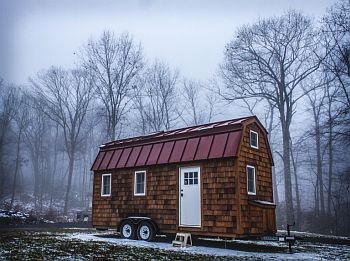
If you are considering building a tiny house then one thing on your checklist is tiny house insulation. Many people decide on tiny house living as it is a way to reduce the cost of living. Not only does it reduce the cost of living but will also reduce the carbon footprint which is becoming increasingly important these days. They are even able to be easily built to take advantage of being “off the grid” using solar panels and batteries because of the reduced need for power. One other advantage is that if built right and you have to move because of a new job etc you can take it with you to your new location.
You expect your tiny house to be cosy and this is the reason why tiny house insulation is important. They are more susceptible to exposure due to their tiny size. Things like wind shear which strips the cocoon envelope from around the house which enhances the transfer of cold into the interior.
So what is the best for tiny house insulation.
It is during the building stage when it is best for applying tiny house insulation and the easiest way to do this is with spray foam. Why? Because spray foam provides the best barrier to air, moisture, heat and cold transfer. This is even more important if building a tiny house using a shipping container because of the susceptibility of metal to form condensation and transfer heat and cold.

There are two types of spray foam used in tiny house insulation, open cell and closed cell, So what’s the difference? With open-cell, the cells are not completely closed and depend on the open end adhering to the next cell. With closed-cell, they are closed like a bubble. Two other factors are price and thickness required to reach a certain “R” value. Open-cell tiny house insulation foam has an “R” value of around 3.7 per inch. Closed-cell foam has an “R” value of 7 per inch. Closed-cell is more expensive than open-cell. Closed-cell has an advantage over open-cell that a less thickness is needed to achieve the same ph value.
So which should you use?
In most cases open cell is fine depending on the environment the tiny house is being located. In other environments closed cell is preferably but is highly recommended for tiny houses being constructed from a shipping container in any environment. You can read the reasons for this on our page “Insulating Shipping Container Homes”

Want a snug comfortable tiny house? How much of your tiny home should you insulate? All of it if possible but a minimum should be the walls and roof. For pure comfort, you may want to spray under the floor as well. Well, being a tiny house it’s not like having the cost of a 30 square home.
One thing to remember a well sealed tiny home will not only let you live in comfort but will pay dividends on energy bill savings. In all cases you should consult with one of our experienced and qualified technicians on the best way for tiny house insulation.